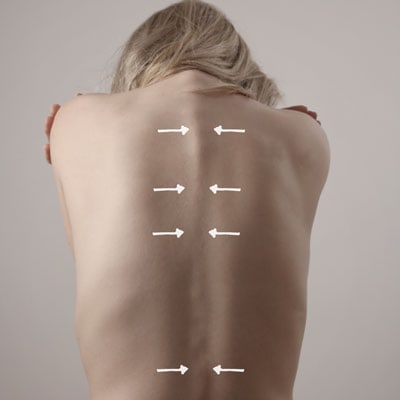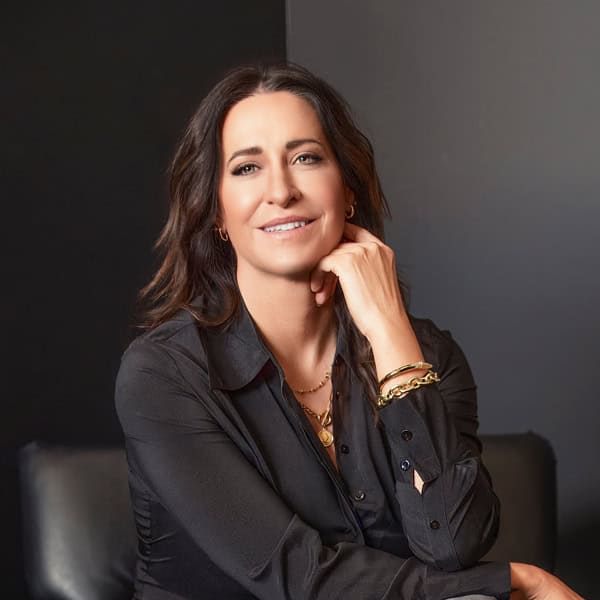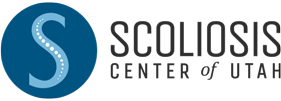Blogs
Clearing Up the Myths and Risks Surrounding Scoliosis

Scoliosis is a condition that affects millions of people, with many myths and misunderstandings surrounding it. Getting the facts straight can help those with scoliosis understand the true risks of the condition and make informed decisions about their treatment options. It’s important to debunk the common myths about scoliosis and discuss the actual risks associated with the condition – particularly in a society where it so common to overlook conditions that aren’t acute or severe enough to limit certain activities.
Why are there myths surrounding scoliosis?
The myths surrounding scoliosis primarily stem from misinformation and a general lack of understanding about the condition. Scoliosis, being a complex spinal deformity, presents in varied forms and degrees of severity, making it difficult for the general public to fully grasp its intricacies. Moreover, the exact cause of idiopathic scoliosis, the most common type, is still unknown. This mystery often leaves room for speculation and unfounded theories. Additionally, the different treatment approaches and their varying degrees of success also contribute to the propagation of myths. It’s essential to refer to credible research sources and professionals for accurate information about scoliosis.
Medical treatment for scoliosis is largely dependent on the severity of the spinal curvature and the patient’s age. Common treatment options include observation, bracing, and surgery.
Observation is typically recommended for mild cases where the curvature is less than 20 degrees. This involves regular check-ups to monitor any progression of the curve. However, this approach is somewhat passive and does not actively correct the curve.
Bracing is used for moderate cases of scoliosis, where the curve is between 25 and 40 degrees in a growing child. The brace aims to prevent further curvature but does not straighten the spine. Wearing a brace can sometimes be uncomfortable and may impact the patient’s self-esteem due to its visibility.
Surgery is the most invasive treatment and is usually reserved for severe cases where the spinal curve exceeds 45-50 degrees. The goal of surgery is to correct the curve as much as possible and prevent future progression. However, like all surgeries, it carries risks such as infection, blood loss, nerve damage, and complications from anesthesia. The post-surgery recovery period can be long and challenging, and in some cases, the curvature can return.
Traditional medical treatment for scoliosis, while often effective, can have some shortcomings when compared to natural, non-invasive techniques such as Chiropractic BioPhysics® and the ScoliBrace™ system. Firstly, traditional medical treatment can be somewhat passive, especially in cases of mild scoliosis where the primary approach is observation. This method does not offer any active correction of the curve. While bracing is used in moderate cases, it often aims only to prevent further curvature rather than straighten the spine. Furthermore, braces can be visibly obvious and uncomfortable, potentially affecting the patient’s self-esteem and comfort.
Surgery, the most invasive treatment, can correct the curve to a certain extent and halt its progression, but it also carries significant risks and a long recovery period. Moreover, in some instances, the curvature can return post-surgery.
The Benefits of Non-Invasive Treatments
In contrast, non-invasive techniques such as Chiropractic BioPhysics® and ScoliBrace™ aim to actively correct the spinal curvature using precise and patient-specific treatment plans. Chiropractic BioPhysics® involves specific adjustments, exercises, and traction that aim to improve the structure of the spine, while the ScoliBrace™ system uses a unique brace design that not only restricts progression but also encourages the spine to return to a more natural position. These methods can provide a more holistic, patient-friendly approach with fewer potential complications and discomfort, making them attractive alternatives or supplements to traditional medical treatment.
Myth #1:
Scoliosis only affects children.
While scoliosis typically begins in childhood, it can also develop or worsen in adulthood. Adults can experience scoliosis due to spine degeneration, injury, or other conditions. It’s important to seek treatment no matter your age.
Myth #2:
Scoliosis only affects girls.
While it’s true that girls are more likely to develop scoliosis than boys, it still affects many males as well. In fact, boys with scoliosis often experience more severe curvature and complications. It’s important to monitor both male and female children for signs of scoliosis.
Myth #3:
Scoliosis can be cured with exercise.
While exercise and physical therapy can help manage and improve scoliosis, it cannot cure the condition. Some types of scoliosis may require surgery or other interventions to manage the curvature. It’s important to work with a scoliosis specialist to determine the best course of treatment for your individual needs.
Myth #4:
Scoliosis is not a serious condition.
Untreated or severe cases of scoliosis can lead to breathing difficulties, chronic pain, and other serious health complications. It’s important to seek treatment and closely monitor any changes in curvature to manage the condition and prevent further damage.
Chiropractic BioPhysics® and The ScoliBrace™ System
At The Scoliosis Center of Utah, we treat scoliosis with Chiropractic BioPhysics® (CBP) and ScoliBrace™. CBP is a scientific and evidence-based chiropractic technique that focuses on the structural correction of the spine. ScoliBrace™ is a custom-made corrective brace that helps improve posture and prevent further curvature of the spine. By combining these treatments, we can help patients achieve lasting relief and prevent the progression of scoliosis.
The Scoliosis Center of Utah offers superior treatment options compared to traditional medical treatments for a number of reasons. Firstly, our center utilizes evidence-based, non-invasive techniques such as Chiropractic BioPhysics® (CBP) and the ScoliBrace™ system. Unlike traditional medical treatments that are often passive and merely aim to prevent further curvature, our methods actively strive to correct the spinal alignment. CBP involves specific adjustments, exercises, and traction that aim to improve the structure of the spine. The ScoliBrace™ system, on the other hand, is a uniquely designed brace that not only prevents further progression, but also encourages the spine to return to a more natural position.
Our treatments are patient-specific, meaning they are tailored according to the individual’s unique needs, rather than adopting a one-size-fits-all approach. This enhances the effectiveness of treatment and increases patient comfort.
Our non-invasive techniques carry fewer potential complications and discomfort compared to surgical interventions, making them a more patient-friendly approach. By integrating these treatments, we can help patients achieve lasting relief and prevent the progression of scoliosis, making our Scoliosis Center of Utah a superior choice for scoliosis treatment.
The Scoliosis Center of Utah – Natural Scoliosis Treatment
By clearing up the myths and understanding the risks associated with scoliosis, patients can make informed decisions about their treatment and avoid further complications. At The Scoliosis Center of Utah, we’re committed to providing individualized and comprehensive care to help patients achieve optimal health and function. Contact us today to schedule a consultation and learn more about our scoliosis treatment options.

Dr. Katalina Dean
Dr. Katalina Dean is the founder and clinical director of Scoliosis Center of Utah, in Midvale, UT. Her team specializes in posture correction, spinal rehabilitation, and non-invasive scoliosis care and bracing.
Call Today
Do You Qualify for Care?
Schedule an Appointment Below
